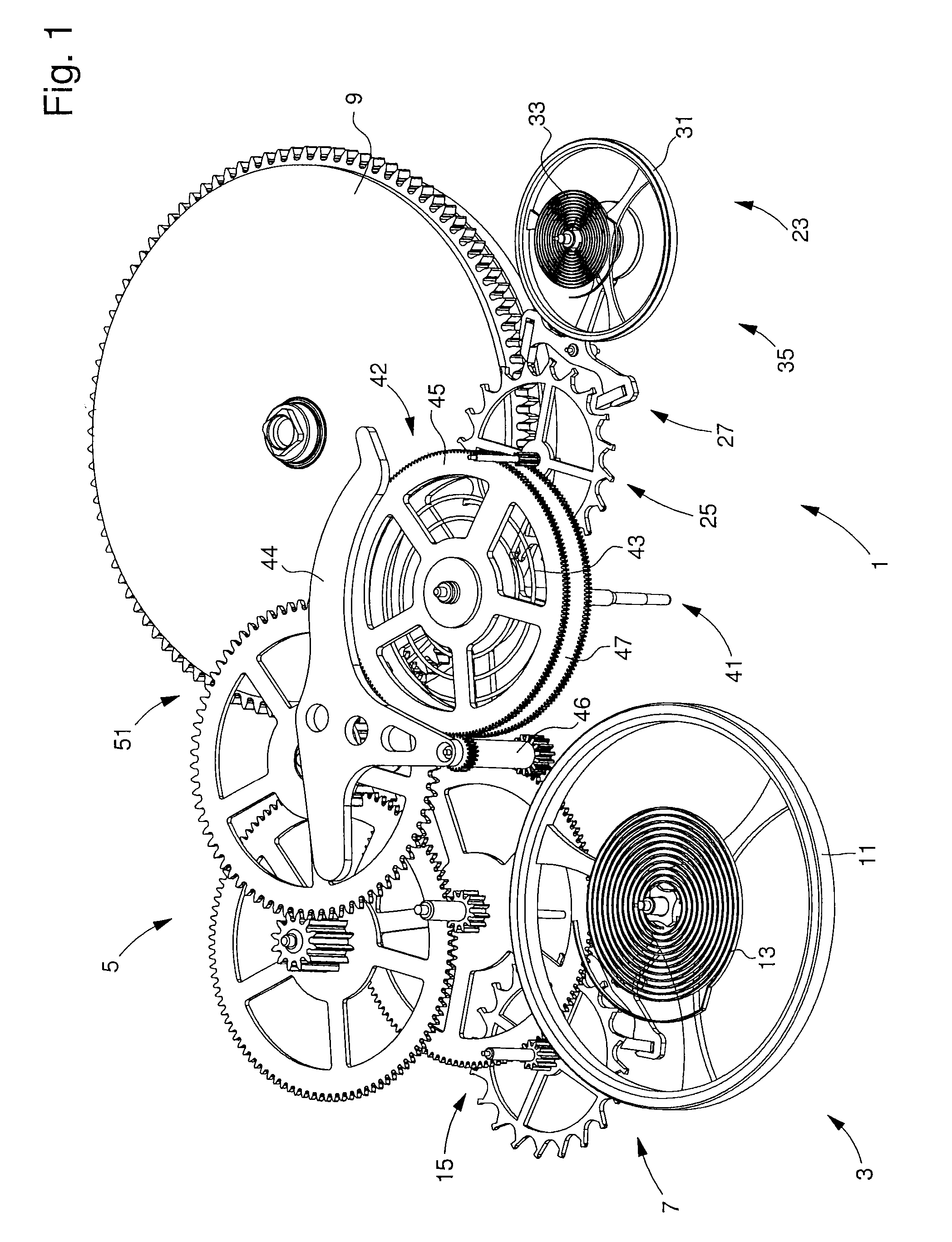Timepiece with coupled oscillators in chronograph mode
a technology of coupled oscillators and timepieces, which is applied in the direction of frequency stabilisation mechanisms, instruments, and timepieces that are very shock sensitive or high energy consumers, and can solve the problems of high energy consumption, high cost, and dubious quality of timepieces, so as to reduce energy consumption and minimum drift, the effect of improving resolution
- Summary
- Abstract
- Description
- Claims
- Application Information
AI Technical Summary
Benefits of technology
Problems solved by technology
Method used
Image
Examples
first embodiment
[0031]Depending upon the desired application of the timepiece, the first f1 and second f2 frequencies may or may not be identical. Thus, in a first embodiment, the first and second frequencies f1, f2 are identical and preferably higher than 5 Hz so as to display both the time and the measured time with better resolution and / or better precision. In this embodiment, frequencies f1, f2 may, for example, be equal to 10 Hz or 50 Hz for displaying 1 / 20th or 1 / 100th of a second respectively.
[0032]In a second embodiment, the first frequency f1 is higher than the second frequency f2 so as to display the time with better resolution and / or better precision. In a similar manner to the first embodiment, the first frequency f1 is at least equal to 10 Hz and the second frequency f2 is preferably comprised between 1 and 5 Hz. Indeed, by way of example, it may be desired for the measured time seconds to be incremented by a single step per second, i.e. second frequency f2 is equal to 1 Hz, “like” a q...
third embodiment
[0034]Simulations were developed hereinafter to describe the synchronisation between these two oscillators 15 and 35. The third embodiment has been arbitrarily selected for the explanation. Thus, oscillator 15 is selected to be a low frequency oscillator and is called the first oscillator. Consequently, in the example below, the second oscillator will be high frequency oscillator 35, which will be synchronised with low frequency oscillator 15.
[0035]Preferably according to the invention, the second oscillator 35 is selected with a strong anisochronism according to amplitude, described by the anisochronism slope Γ, and the amplitude A02 at which the rate is zero. Moreover, it is assumed that first oscillator 15 always has a substantially zero rate by slightly varying its amplitude.
[0036]The simulations show the change in the two oscillators 15, 35, i.e. their amplitude and state of phase difference with time, and thus mean that it can be checked whether or not it is possible to synchr...
PUM
 Login to View More
Login to View More Abstract
Description
Claims
Application Information
 Login to View More
Login to View More - R&D
- Intellectual Property
- Life Sciences
- Materials
- Tech Scout
- Unparalleled Data Quality
- Higher Quality Content
- 60% Fewer Hallucinations
Browse by: Latest US Patents, China's latest patents, Technical Efficacy Thesaurus, Application Domain, Technology Topic, Popular Technical Reports.
© 2025 PatSnap. All rights reserved.Legal|Privacy policy|Modern Slavery Act Transparency Statement|Sitemap|About US| Contact US: help@patsnap.com



